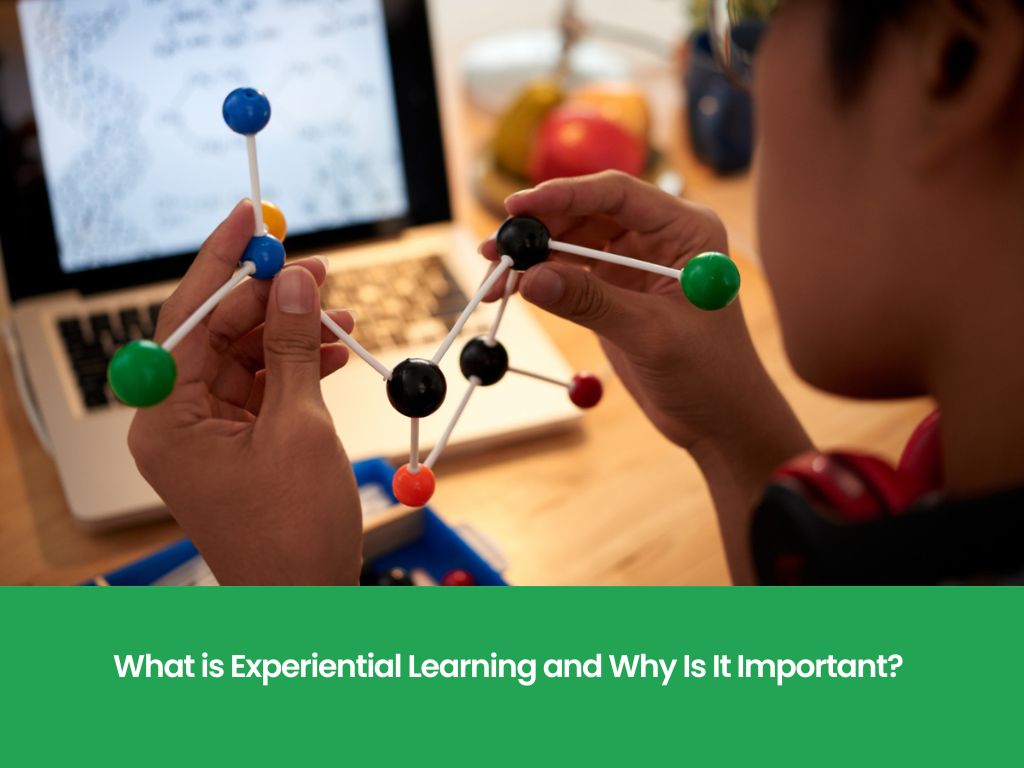Introduction
As learning models evolve in response to the challenges of a new era, increasing focus is being placed on how students learn, not what they learn. Among the best and most effective models of learning in the present day is experiential learning. This model is centered on direct experience, reflection, and application, guiding students from the memorization phase to the field of real knowledge.
What is Experiential Learning
Experiential learning is a method by which students construct knowledge and skills through direct experience. Rather than listening to information given, students are engaged in important activities, reflect on actions, and apply their conclusions to new situations.
Educational theorist David Kolb defined this model as a four-step process:
- Concrete Experience: The learner engages in an activity firsthand.
- Reflective Observation: They observe the experience and record any inconsistencies.
- Abstract Conceptualization: They infer or learn generalizations from the experience.
- Active Experimentation: Students experiment with things in new settings.
This process aids learners in constructing a deeper understanding through the inclusion of action, reflection, and conceptual learning.
Why is Experiential Learning Significant?
Experiential learning provides students with much more than intellectual classroom knowledge. It builds the ability to live and provides advantages that classroom education might not be able to deliver as effectively.
1. It Enhances Retention and Engagement
Studies have established that students can learn as much as 75% of what they learn by doing, as opposed to only 10% of what they read. Experiential learning engages multiple senses and mental processes and makes the lessons more memorable.
2. Promotes Problem-Solving and Critical Thinking Skills
Given real problems or assignments, students will be required to analyze, critique, and decide for themselves or in groups. This improves their decision-making and analysis skills—prime attributes of any successful individual.
3. Encourages Teamwork and Leadership
Experiential learning is often a group effort. From group work and debates to simulations, students learn to collaborate, communicate, and sometimes even direct their peers. These are all skills worth possessing in today’s workplace.
4. Promotes Creativity and Innovation
Unlike formulaic textbook learning, experiential learning leaves space for creativity. Students experiment, attempt, fail, and attempt again. This fosters a culture of curiosity and innovation.
5. Makes Learning Relevant and Purposeful
Experiential learning connects educational content to practical applications. This not only boosts knowledge, but also makes students appreciate why they are learning something—boosting motivation and purpose.
Examples. Experiential Learning in Action
Experiential learning applies to all subjects and grade levels. A few of them are:
- Science: Laboratory work, nature walks, climatology studies, robotics lab
- Math: Budgeting, building design, measuring common household objects
- Social Science: Role-play simulations, mock parliaments, heritage walks
- Language Arts: Story dramatization, writing actual blogs or newsletters, speech contest
- Technology: coding marathons, app-building competitions, multimedia storytelling
Gyan Ashram School one of the Best Schools of Jaipur have included such methods in their curriculum so that students are able to bridge gaps between theory and practice.
Experiential Learning vs Traditional Learning
While the conventional mode of learning is through lectures, note-taking, and examination, experiential learning is participatory, student-centered, and reflective. With a more traditional classroom, students are likely to be passive recipients. Experiential learning makes them proprietors of their own learning.
This shift in mode of learning is highly beneficial in the acquisition of soft skills like emotional intelligence, time management, flexibility, and leadership—a collection of skills that are extremely useful in academic and professional success.
Difficulties in Implementing Experiential Learning
Although it is beneficial, experiential learning is time- and facility-intensive. Schools can encounter difficulties such as:
- Poor teacher training in experiential approaches
- Shortage of time in rigorous curriculums
- Space and resource limitations
- Difficulties in quantifying qualitative outcomes like teamwork or creativity
However, schools that are innovative are able to overcome these obstacles with strategic investment, flexible curriculums, and partnerships with external organizations.
Role of Teachers and Parents
Teachers are not information deliverers but facilitators in an experiential setting. They must guide students through learning, requiring them to reflect, discuss, and apply learning.
Parents can, however, support experiential learning at home by facilitating hands-on work, outdoor exploration, and asking questions. Involving children in regular tasks such as shopping, cooking, or setting the budget also offers experiential learning.
How the Top school in Jaipur Are Embracing This Model
Urban education in Jaipur is transforming at a rapid rate, and more and more schools are adopting new models of learning. Gyan Ashram School one of the Top school in Jaipur incorporate experiential learning in core subjects in the form of fieldtrips, maker labs, student exhibitions, and project-based models of learning.
These schools recognize the world no longer compensates people for what they know, but for what they can do with what they know. Experiential learning instructs students not on how to pass tests, but on how to succeed in life.
Conclusion
Experiential learning is more than a pedagogy—it’s a lifestyle that transforms students into doers, thinkers, and problem solvers. In a world where flexibility, creativity, and communication skills are more necessary than ever, this approach gives students the skill they will carry with them for the duration of their life.
As education becomes more progressive, schools that adopt experiential learning will lead the charge in bringing up the next generation of self-assured, capable, and compassionate adults.

